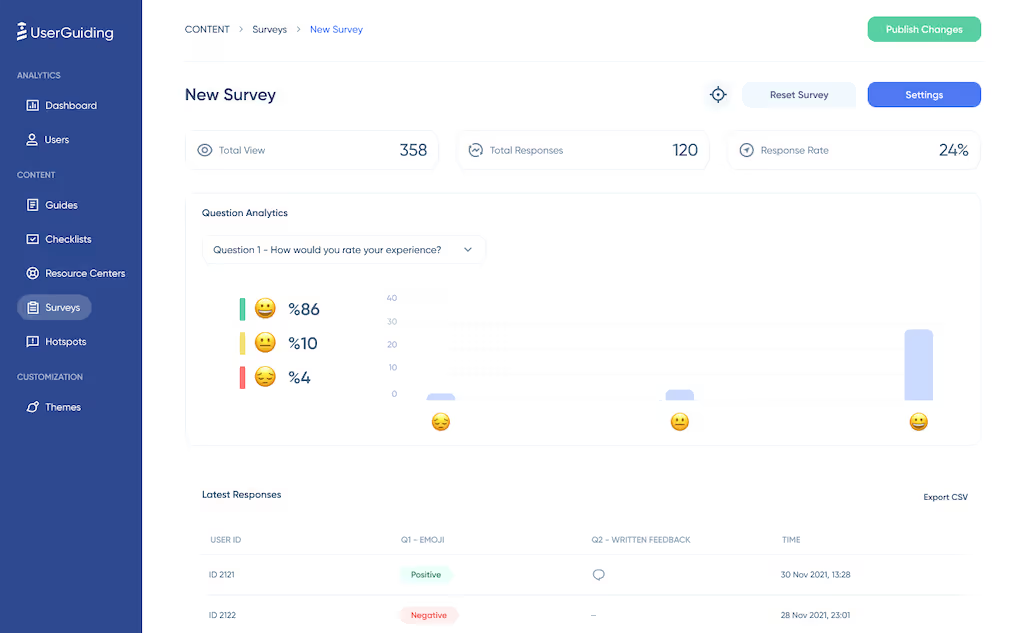

“We all need people who will give us feedback. That’s how we improve.”
– Bill Gates
Reading this quote some of you may say that “well, it’s not a powerful quote at all”.
However, I disagree.
It is a simple yet very powerful one. It is literally the golden component of teamwork.
If you want your teamwork to make your dream work, you should know how to give and get feedback. It will carry to greatness step by step.
If you do not follow this advice, and you think that you are too good to hear others’ opinions, you will not be able to solve problems and those problems will slowly but surely eat you out!
Let me get into explaining how you can make use of feedback in the best way!
What is Employee Feedback?
Employee feedback is any information shared (formally or informally) by employees about their performance, abilities, or willingness to work as part of a team. Feedback can come from both managers and colleagues, and when done properly, it can help to create a better, more harmonious workplace.
Employee feedback is a highly effective tool. It has the potential to grow and develop your organization's staff, increase the levels of trust and communication, and build relationships between employees and managers, if it’s done properly.

Unfortunately, in an effort to avoid discomfort, feedback is often overlooked or ignored entirely. When done correctly, feedback will raise team spirit while also increasing engagement and productivity. However, if you do it too sloppily, you'll end up doing more harm than good.
Positive and negative feedback is essential because it helps in breaking bad habits, encourages positive attitudes, and allows teams to function more efficiently toward their goals.
Employees feel like they're a part of the company once they start getting feedback.
Employee recognition is essential for increasing productivity and maintaining high levels of engagement. It is also an important part of organizational communication and one of the best tools available to managers.
The value of positive employee feedback is obvious. It promotes positive actions and is related to higher employee engagement and productivity.
Employee feedback, both positive and negative, is essential. It helps employees appreciate their strengths and weaknesses and decreases negative behavior when provided constructively.
The right feedback, provided at the right time, can have a big effect on the staff’s habits, skills, and eventually careers.
Building relationships between workers and managers is more important than ever as the gig economy grows and more employees work independently.
The importance of employee feedback in the development of these relationships cannot be overstated. Listening to employee feedback and acting on it is just as important for managers as providing feedback.
Employee feedback has developed into ongoing listening strategies that build trust between managers and employees in today's world. Daily employee feedback leads to dramatically higher engagement, as well as to a whole slew of other advantages.
Let's look at why employee feedback is important, some real-life examples of employee feedback, and how managers can act and take action to create a listening culture.
What is the Employee Feedback Cycle?
For the manager, the employee feedback progress consists of three parts:
- understanding what employee is doing;
- giving feedback;
- receiving feedback.

Understanding employees work-process
It's important to have a good picture of what everyone on the team is up to when it comes to employee feedback.
You can get a good overview of what your team is doing by using weekly status reporting software. Weekly status reporting is not only the simplest type of employee management, but it also offers an opportunity to provide immediate employee feedback through weekly reviews or like/comment features that everyone is familiar with.
Giving employee feedback
When it comes to managing people in your company, you can't just rely on yearly or quarterly feedback. Employees need regular feedback.
Giving weekly feedback can seem to waste a lot of time if you're in charge of larger teams or departments. However, feedback does not necessarily need to be provided in a one-on-one meeting or in some other time-consuming formats.
Employee feedback can be a text as brief as two sentences or as easy as pressing the "Like" button to show that you are aware of and approve of what they are doing.
12 Strategies for giving effective, actionable employee feedback
Whatever role you have in your company, you will certainly be required to provide feedback at some point. Giving praise is easy because everyone enjoys a nice compliment. Constructive criticism, on the other hand, is difficult to deliver... and much more difficult to hear and accept.
Keeping quiet will seem like the easiest option, but it will be more difficult for you and your coworkers in the long run because the issues will continue to fester. When it's time to speak up, instead of choosing a quick way out, take a deep breath and use the strategies below.
Here are 12 tips to help managers and leaders have regular, effective employee feedback that will produce positive outcomes.
1- Avoid giving unwanted advice
Just one-third of people think the feedback they get is valuable. Since it's usually not asked for, it can trigger a lot of tension for the person who receives it.
If your direct report does not specifically request feedback, be sure to ask questions about when, how, and if they would like to receive it.
You will give your employee more control and make it more likely that they will act on the feedback you’ve provided if you do so. Allow the employees to take control of the feedback agenda by making them feel good to know they are free to ask for it.
2- Give timely, ‘live’ feedback
Have you ever kept something inside for weeks or months before actually telling someone what was your mind? You wouldn't be the first to do so, but it's never the best thing to do (trust me, I know from experience).
When you wait, small issues can turn into big ones, and if you start pointing out the problems that go back weeks, months, or even years, the person receiving the feedback is more likely to become defensive. You've also deprived them of the ability to develop during the period you've withheld your feedback.
Work is digital and remote now, so how do I collect timely feedback?
You could be reading this from your home, from the nearest coffee shop, or from the beachside (🤫 we all did it).
And we all know that while platforms such as Teams or Slack make remote communication easier, it is not the same as walking to the next table and asking your colleagues a question.
The same goes for feedback.
Not everyone is comfortable with sharing what they want to say on a channel or digital group.
And it is not efficient to ask all employees to fill out a Google form every time there is something new going on.

Don't worry.
We made this process easier for employers, managers, and employees.
UserGuiding now offers advanced (but easy-to-use) surveying capabilities.
With UserGuiding, you can not only onboard and engage new employees faster and easier, but you can also collect any kind of feedback and conduct any kind of survey easily.

Do you need how your team found the new CRM system?
Ask them through UserGuiding's star rating survey, or thumbs up-down survey, along with a feedback question.
Do you need to know how satisfied other teams are with your collaboration performance?
Let them rate it through 1-5, 1-10, or multiple choice surveys right on the collaboration platform you use.
Make the questions and the feedback system accessible everywhere, on their onboarding checklist, on the resource center, or directly on the screen.
UserGuiding's price starts from $174/month for all features and fast customer support.
3- Use tact but don’t sugarcoat anything
"Sandwiching" is a common technique for providing constructive criticism, but I don't recommend it. The idea is to layer criticism with compliments to soften the blow of criticism.
To be honest, that comes across as insincere to me, and most people can tell.
So, rather than sandwiching the critique, giving it to them straight... and kindly!
Let your coworkers know that you're not criticizing them as an individual, and if you're their supervisor, make sure they understand that their job isn't in danger (unless, of course, it is... in which case, it shouldn't be the first time you've discussed the issue).
4- Demonstrate real empathy
“Giving feedback that reveals a significant gap in self-awareness necessitates extra caution. If you're the one who has to put up with your coworker's bad behavior, make sure you can put your frustrations aside for the sake of the empathy you'll need for this talk. Prepare to give your coworker some time to cope with their initial shock on hearing your feedback before approaching them. Keep in mind that you must not get affected by their sharp reaction to your message”.
Ron Carucci
5- Make it clear that you’re on the same team
There are two approaches to employee feedback:
You vs. them: You should sit them down with a serious expression on your face and approach the relationship as if it were a zero-sum game, with only one of you winning. Or...
You + them vs. the problem: you could look at it as a win-win situation in which you all come together to address the problem and work together to solve it.
Clearly, the latter provides the greatest opportunity for growth. It offers psychological protection necessary to foster an open environment, as well as paving the way for a real change.

6- Be specific and provide context
When dealing with a problem, it's important to include specific examples of where the problem occurred. Be as specific as possible about when and where you first noticed the problem, as well as why it's problematic.
The vague feedback can sound familiar because let's face it, most of us argue in this manner. It's something we typically do with our friends, family, and partners, but it's rarely productive.
The precise, actionable feedback is much more beneficial, as it encourages everyone to work together toward finding a real solution. That is exactly what feedback is all about.
7- Don’t wait for a quarterly review
Employee feedback received right after an event has the biggest effect on performance.
Employee engagement skyrockets when they receive feedback on a weekly basis. If problems go unaddressed, they can spin out of control. As a result, by the time the quarterly performance review rolls around, you'll be dealing with many problems that could have been avoided if they had been brought up sooner.
Another disadvantage to saving feedback for the next performance review process is that the problems will be ignored and the opportunity for providing useful feedback will have expired.
Daily or weekly feedback will help you escape the recency bias—which mainly represents recent work and happens much too infrequently to comply with the employee's workflow—which will make monitoring and reviewing a colleague's work far simpler for everyone involved.
8- Be aware of any imbalance in power
This has probably happened to you too...your boss says, "Can I see you in my office?" and you instantly get that unpleasant feeling in your stomach...
Your adrenal glands release cortisol when your brain detects a danger (the stress hormone). Your mind shuts itself off to new ideas as blood rushes to the primitive parts of your brain, preparing you to run or fight. We've all been there, but it's easy to forget what it's like when you're the one with the upper hand in a conversation.
9- Keep it private
Even praise is better delivered in a private meeting. Some people really dislike being the focus of attention for different reasons. You may even think about providing written feedback to your employees. This will allow you more time to think carefully and react more thoughtfully.
Feedback is not only unpleasant for the receiver; it can also be unpleasant for the giver. You may help to relieve some of the underlying pressure by shifting the location to a more casual environment.
10- Make the conversation a two-way street
Lecturing someone on how they should improve is about as effective as talking to a brick wall. When addressing sensitive topics, don't forget the importance of respect, and don't talk to someone when it's much more productive to open up the conversation and talk with them.
Encourage the receiver to respond to your feedback and ask follow-up questions. If the problem has been identified, you and your colleague will collaborate to find a solution or an appropriate course of action.
11- Focus on performance, not personality
Focus on an employee's behavior (what they do) rather than on their personality characteristics (who they are). Consider the following two examples from "The Secret to Giving Constructive Criticism" and consider what kind of feedback you'd like to get.
Example 1: “Your arrogance is causing a problem.”
Example 2: “When you interrupt me in front of a client it causes a problem.”
Example 2 is a much better approach to criticism since it focuses on the person's actions, while example 1 pokes fun at the person's character, which won't help them change.
12- Keep the conversation going by following up
Evaluation is difficult, and it requires a great deal of thought and effort. Rather than approaching feedback interactions as a one-and-done, follow up with your direct report and show appreciation when you see progress.
This will show your interest in their progress and will encourage them to keep up the good work.
Employee feedback is an important part of development and growth. These tips will help managers and leaders in better delivering it, resulting in more collaborative, communicative, and high-performing cultures.
If you want better results, work on your feedback.
Conclusion
Going back to the idea that getting feedback is the golden rule of teamwork and achieving greatness, I suggest that not only managers but also all the other parties of a team should put an emphasis on feedback.
As I wanted to emphasize throughout the article, it is not only the feedback that you have that is important but it is also how you convey that feedback to the others. This is why giving and getting feedback should be learnt all around.
I hope this article was useful to those struggling to get and give feedback!

















.svg)
.svg)
.svg)
.svg)
.svg)

.svg)
.svg)












.svg)
.svg)




.png)

















